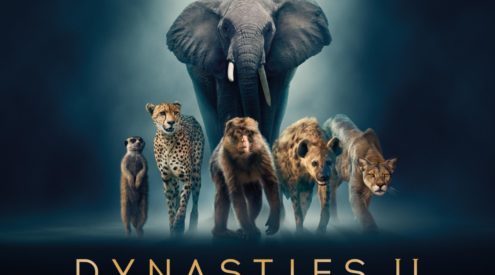I’m not afraid of dogs. They’ve been with me all my life and I’m relaxed around them. I’ve never been bitten or even growled at. We instinctively understand one another. So the incident that took place years ago in a twilit lane in Noordhoek, Cape Town, continued to worry me.
I’d been visiting friends who had two young Alaskan malamutes – wolf-like sled dogs. A colleague was to pick me up so I suggested he do it at the gate rather than come all the way onto the property down the long, tree-lined drive.
I strolled away from the house, listening to the silence of evening settle over the woods. Then, for some reason, quite far up the drive, I turned round and there behind me were the malamutes, padding on hushed paws. I let loose a yell of fear that surprised even me and dived for the nearest tree, seized by an instinct over which I had no control.
As I leapt for the branches, my rational mind kicked in and I hung there, feeling stupid. The dogs regarded me with puzzled expressions, wagging their tails.
After listening to a recent lecture at the University of the Western Cape by Louise Green about wolves and werewolves, I recalled my panic and figured it was time to re-open the case.
About 40 million years ago, canids, of which the wolf and the domestic dog are members, first appeared in North America. By the time my ancestors ambled from Africa across the land bridge into Europe and Asia, the grey wolf ruled the rich hunting grounds emerging south of the receding glaciers. Both species had a taste for flesh, but the wolf was better at bringing it down.
A full-grown wolf can weigh 75 kilograms and be as big as a Great Dane, although far more lithe and muscular. Their paws are the size of a fist. They’re big and they’re smart. Intelligence is related to brain size and this, according to primatologists, is the effect of animals living together in groups.
Simply put, social animals have bigger brains than solitary ones. Humans and wolves have intelligence born of co-operation within large families. They teach and care for their young, work together to acquire food, claim territories and have complex communication systems.
However, we have different specialities. Ours is rationality, for wolves it’s running. If you’ve ever seen a wolf, African wild dog, jackal or fox at speed, you’ll know what I mean. They can glide effortlessly for hours, which is how they wear down prey.
Where I’m heading with this is the conclusion Mark Rowlands came to after many years of living with a wolf named Brenin and beautifully captured in a book, The Philosopher and the Wolf. The canid family – wolves, foxes, jackals and dogs – understand us because in many ways they’re like us.
This has led them in two directions. One is a path through the grey wolf to the dog, although it’s hard to imagine that ancestral parentage in a Maltese poodle. This is the path through understanding to trust and companionship for mutual benefit. The other was – although it is no longer – the path of implacable enemies. Wolves understand us, they’re hunters and deep down in the ancient part of our simian brain we know that.
If a lion or any of the cat family, or even an elephant, charges you and you stand still (you should), your failure to run puzzles them and generally they will stop, on the assumption that if we don’t fear them, they should fear us. Never try that with a wolf; it will call your bluff.
There’s an old story from the forests of ancient Europe about these different paths. Discouraged after an unsuccessful day of hunting, a hungry wolf came upon a well-fed dog. He could see the dog was having a better time of it than he was and he inquired what the dog had to do to stay so well-fed. “˜Very little,’ said the dog, “˜guard the house, show fondness to the master, be submissive to the rest of the family and I get well fed and warmly lodged.’
The wolf carefully thought this over. He risked his life almost daily, had to stay out in the worst of weather and was never assured of his meals. So he figured he’d try another way of living.
As they were loping along together the wolf saw a place around the dog’s neck where the hair had been worn thin. He asked what this was and the dog said it was nothing, “˜just the place where my collar and chain rub.’
The wolf stopped short. “˜Chain?’ he asked. “˜You mean you aren’t free to go where you choose?’
“˜No,’ said the dog, “˜but what does that mean?’
“˜Much,’ answered the wolf as he trotted back into the forest. “˜Very much indeed.’
In a sense we’ve become that dog, but that which is wild in us hasn’t gone, it’s merely buried. As Rowlands discovered in his love for Brenin, a wolf is part of the hidden story of who we are, a bright clearing in the ancient forest of the human soul or a dark shadow of all we fear. It can fill you with delight or scare you to death. At least I think that’s the reason I found myself hanging from a branch being regarded by two puzzled dogs all those years ago.

















